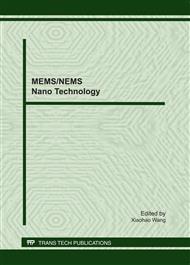p.264
p.270
p.276
p.281
p.287
p.293
p.297
p.301
p.305
Stokes' Second Problem with Velocity Slip Boundary Condition
Abstract:
The damping effect of microfluidics has great effect on the dynamic characteristics of MEMS devices. Based on the separation of variables and the integral transform methods, the Stokes' second problem is solved at the microscale velocity slip boundary condition and the analytical solution for velocity distribution is obtained. Furthermore, the expression of the penetration depth is gotten for Stokes model in this article. Through analysis, it’s found that due to the effect of the microscale velocity slip boundary condition, the velocity oscillation amplitude and the penetration depth have been reduced. Then the shear stress, the damping force and elastic force on the plate have been investigated. It’s shown that both the elastic coefficient and the damping coefficient increases as the oscillation frequency rises.
Info:
Periodical:
Pages:
287-292
Citation:
Online since:
June 2011
Authors:
Price:
Сopyright:
© 2011 Trans Tech Publications Ltd. All Rights Reserved
Share:
Citation:


